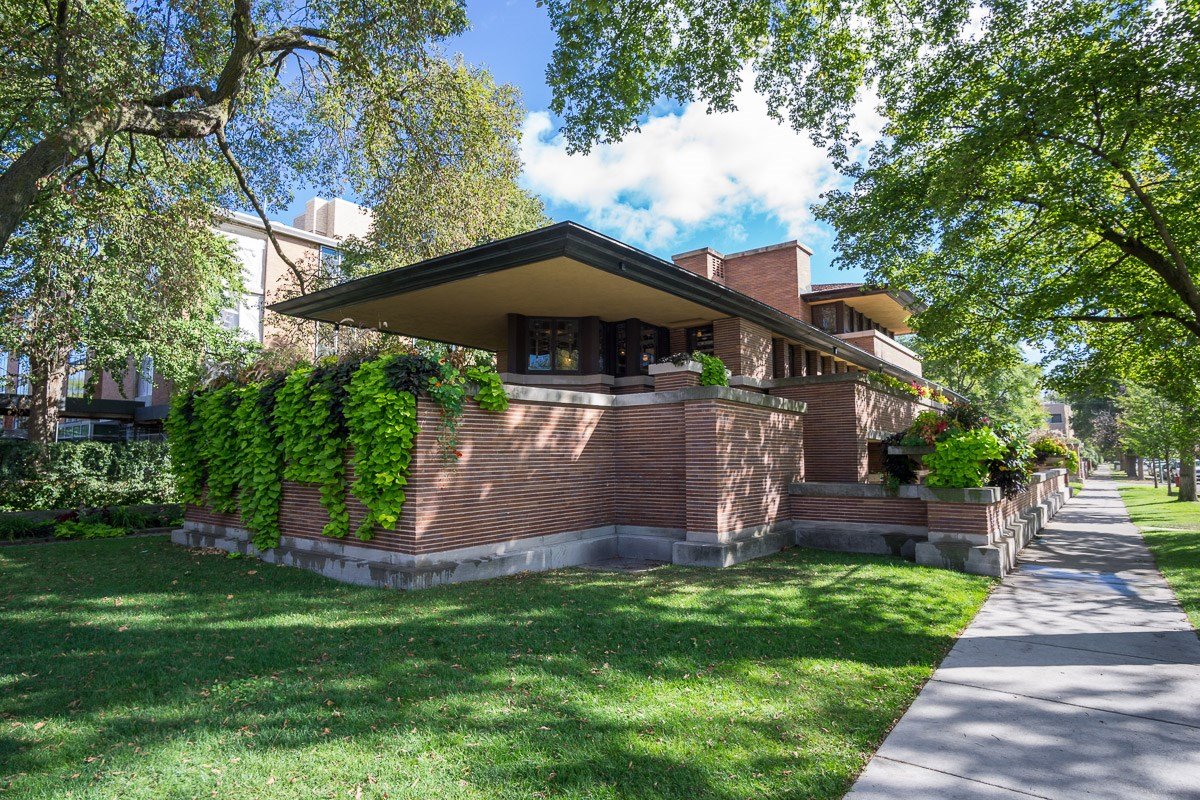#11942. Organic Prairie Style Brick Facade: Harmony of Horizontal Lines and Natural Surroundings
The image showcases an outstanding example of early 20th-century architecture that, by all characteristic features, appears to be a work by renowned American architect Frank Lloyd Wright in his distinctive Prairie Style. The horizontality of the facade is emphasized by the extended lines of brickwork and protruding roof overhangs with wide eaves, which create deep shadows and visually connect the building with the surrounding landscape.
The house facade demonstrates Wright's characteristic symmetry and precise proportions. The warm brownish brick masonry forms a solid visual foundation, while ribbon windows positioned beneath the overhanging roof provide abundant natural light to the interior. Particularly impressive is the integration of the building into its natural surroundings — lush greenery partially envelops the walls, making the architecture come alive and organically embedded in its environment.
The facade design reflects the philosophy of "organic architecture" — the building doesn't stand in opposition to nature but becomes its natural extension. The concrete foundation, brick masonry, wooden elements, and vegetation create a multi-layered texture that enriches the visual perception.
When drawing inspiration from such architecture for your own home, several key techniques are worth noting: the use of horizontal lines to visually expand space; application of natural materials characteristic of the local area; designing wide roof overhangs for protection from precipitation and sun; integration of landscape design directly into the building architecture; and creating a smooth transition between internal and external spaces.
